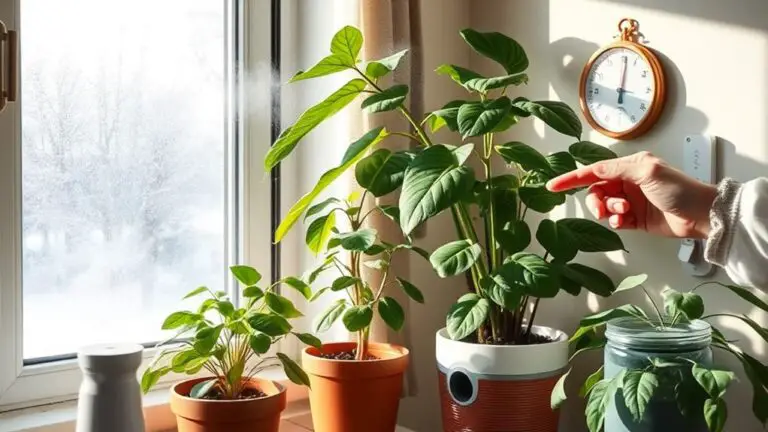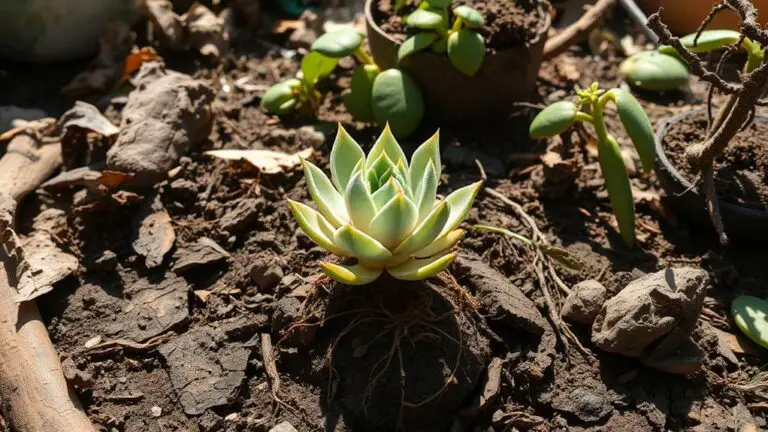Don’t Fall for These Stupid Myths About Succulents
Succulents have surged in popularity over the past few years, gracing Instagram feeds, office desks, and living room shelves with their vibrant hues and fascinating shapes. Their reputation for being low-maintenance and aesthetically pleasing makes them a favorite among plant enthusiasts and novices alike. However, with popularity comes a slew of myths and misconceptions. It’s time to debunk some of these myths and set the record straight about these resilient plants.
Myth 1: Succulents Don’t Need Much Water
One of the most pervasive myths about succulents is that they don’t need water. While it’s true that succulents are drought-resistant and can survive with minimal watering, they still need water to thrive. The key is to water them correctly. Succulents store water in their leaves and stems, which allows them to go longer periods without water, but they can still suffer from dehydration. The best practice is to water your succulents thoroughly, allowing the soil to dry out completely between waterings. Over-watering can lead to root rot, while under-watering can cause the plant to wither.
Myth 2: Succulents Are Indestructible
Another common misconception is that succulents are indestructible. While they are indeed hardy plants, they are not invincible. Succulents can suffer from various issues such as pests, diseases, and improper care. For instance, mealybugs and spider mites are common pests that can infest succulents, leading to their decline. Additionally, improper lighting conditions, poor soil, and extreme temperatures can all affect the health of your succulent. It’s essential to provide the right care and environment to ensure your succulents thrive.
Myth 3: Succulents Thrive in Any Light
Many people believe that succulents can thrive in any lighting condition, from low light to direct sunlight. However, this is not entirely true. While succulents are adaptable, they have specific lighting needs. Most succulents prefer bright, indirect light. Too much direct sunlight can scorch their leaves, while too little light can cause them to become leggy and weak as they stretch towards the light source. It’s crucial to find the right balance and place your succulents in a spot where they can receive adequate light without being exposed to harsh, direct sunlight for extended periods.
Myth 4: Succulents Don’t Need Fertilizer
There’s a common belief that succulents don’t need fertilizer to grow well. While it’s true that succulents are not heavy feeders like some other plants, they can benefit from occasional fertilization. Using a balanced, diluted fertilizer during the growing season can help your succulents grow stronger and healthier. Over-fertilizing, however, can cause more harm than good, so it’s important to use fertilizer sparingly and follow the instructions on the package.
Myth 5: Succulents Grow Slowly
While it’s true that some succulents are slow growers, not all succulents have the same growth rate. Many factors, including species, growing conditions, and care, influence how fast a succulent will grow. Some succulents can grow relatively quickly under optimal conditions, while others may take years to mature. Understanding the specific needs of your succulent species will help you manage your expectations and provide the right care for optimal growth.
Myth 6: Succulents Are Only Suitable for Indoors
The idea that succulents are exclusively indoor plants is another myth that needs debunking. While succulents can indeed make excellent houseplants, many species thrive outdoors as well. In fact, some succulents, such as Sedum and Sempervivum, are hardy enough to survive in outdoor conditions, even in cold climates. When planted outdoors, succulents can add texture and interest to your garden. Just be sure to choose the right species for your climate and provide the appropriate care.
Myth 7: Succulents Are Always Small
While many people picture succulents as small, dainty plants that fit perfectly on a windowsill, they come in a wide range of sizes. Some succulents, like the Saguaro cactus, can grow to be several feet tall, while others remain compact. The size of your succulent will depend on its species and growing conditions. When choosing succulents, it’s important to consider their mature size and ensure you have enough space for them to grow.
Myth 8: You Can’t Propagate Succulents
Some people believe that propagating succulents is difficult or impossible, but this couldn’t be further from the truth. Succulents are actually quite easy to propagate through various methods, including leaf cuttings, offsets, and stem cuttings. With a little patience and the right technique, you can multiply your succulent collection with ease. Just be sure to give your cuttings time to callous over before planting them in soil to prevent rot.
Myth 9: All Succulents Are Cacti
This is a common misunderstanding, but not all succulents are cacti. While all cacti are succulents, not all succulents are cacti. The term “succulent” refers to any plant that stores water in its leaves, stems, or roots to survive dry conditions. Cacti are a specific family of succulents characterized by their spines and unique areoles. There are thousands of succulent species outside of the cactus family, each with its own distinct characteristics and care requirements.
Myth 10: Succulents Are Native to Deserts Only
It’s easy to associate succulents with desert landscapes, but these plants are found in various habitats around the world. While many succulents do originate from arid regions, others come from mountainous areas, rainforests, and coastal regions. This diversity in habitats means that succulents have adapted to a wide range of growing conditions. Understanding the native environment of your succulent can help you replicate similar conditions at home for optimal growth.
Conclusion
Succulents are fascinating plants with a wide array of shapes, sizes, and colors. While they are known for their hardiness and low-maintenance nature, they are not immune to neglect or poor care. By debunking these common myths, you can ensure your succulents receive the care they need to thrive. Remember, proper watering, lighting, soil, and occasional fertilization are key to maintaining healthy succulents. Whether you’re a seasoned gardener or a plant enthusiast, understanding the true needs of your succulents will help you enjoy these remarkable plants for years to come.







